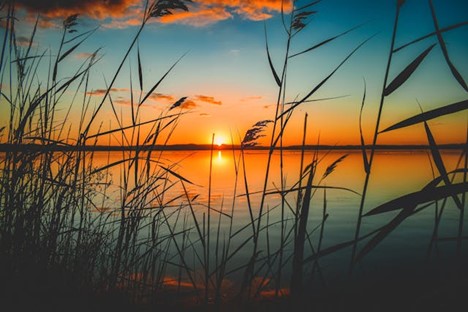
Lately, I’ve been really busy. My work is in its busiest season. We’ve been house hunting. Friends and family keep inviting us to events we can’t say “no” to. I’m piecing together plans for a complicated vacation next year. And every week, there are a dozen urgent but unexpected tasks to take care of.
I also haven’t been writing much, finding it hard to focus enough to do deep work. I haven’t made any progress on my projects. And I’ve been feeling a little anxious, a little overwhelmed, and a little disappointed in myself.
It would be easy to blame my faltering productivity on being busy. But honestly, I’ve also been on my phone too much. I’ve fallen out of the habit of starting every day in airplane mode. I’ve been checking email way too often. I’ve been filling downtime with games like Quordle and Connections.
The reality is that life is almost always busy. So busy isn’t going away. Busy is just an excuse.
The solution to my problem is not to become less busy, but to find more stillness.
Stillness is the Key
To counteract the bad phone habits I’ve slipped into, I’m revisiting my notes on Ryan Holiday’s excellent book Stillness is the Key.
Stillness refers to tranquility, both inner and outer, but especially inner.

It can be sitting peacefully on a park bench, taking in the sights and sounds of spring without focusing on anything in particular. Stillness can be taking a few deep breaths while stopped at a red light rather than being upset that you have to wait. It can be reading from a book of wisdom in the morning or writing in your journal at night. Stillness can be listening patiently while someone tells you what’s urgently on their mind.
Holiday explains how stillness is the key to mental health, creativity, and wisdom:
“It is in this stillness that we can be present and finally see truth. It is in this stillness that we can hear the voice inside us. How different would the world look if people spent as much time listening to their conscience as they did to chattering broadcasts? If they could respond to the calls of their convictions as quickly as we answer the dings and rings of technology in our pockets.”1
Be Weird
The modern world does not encourage us to embrace stillness. It teaches us that boredom is a bad thing – that every waking moment should be filled with consuming information or entertainment. To find stillness in such a world, we have to deliberately choose the unconventional.

Spending most of your day in airplane mode or do not disturb mode is weird. Certainly, not everyone can do it. But nearly all of us can do it a lot more often than we do now. We don’t need to be connected 24-7.
Starting your day with meditation rather than checking your email or checking the news (notice how you were just triggered to do just that) is unconventional. But it’s far better for your brain.
It’s normal to run from one activity to the next, always in a hurry, never taking a break. It’s weird to slow down, reduce your number of obligations, and make more time for stillness. But doing nothing is one of the most powerful ways to recover from stress.
“We are afraid of looking stupid. We are afraid of missing out. We are afraid of being the bad guy who says, ‘Nope, not interested.’ We’d rather make ourselves miserable than make ourselves a priority, than be our best selves.”1
Going out into nature without your phone, without documenting your hike with Instagram-worthy photographs is weird. It’s not what most people are doing. But when you’re on your phone while out in nature, you’re not really in nature anymore. It’s far better to just use your brain to remember what you saw. It’s far better to just be there.
Sometimes, it’s good to be weird.
We’re Afraid of Stillness
“All this noise. All this information. All these inputs. We are afraid of the silence.”1
Most people, myself included, have become averse to stillness. We find boredom uncomfortable. We don’t know what to do with ourselves when there’s nothing to do. We’re afraid of being alone with our thoughts, alone with ourselves.
This fear is irrational, and it’s holding us back.
Solitude is Good
“Solitude is not just for hermits, but for healthy, functioning people.”1
Being alone with ourselves is part of how we come to know ourselves. It’s how we clarify our values. It’s how we figure out what really matters to us.

“In solitude, time slows down, and while we might find that speed hard to bear at first, we will ultimately go crazy without this check on the busyness of life and work. And if not driven crazy, we will certainly miss out.”1
Being alone doesn’t mean being lonely. Solitude can be a source of inner peace. And being alone with our thoughts is the most reliable way to have better, deeper thoughts.
Insights Happen During Stillness
“Breakthroughs seem to happen with stunning regularity in the shower or on a long hike. Where don’t they happen? Shouting to be heard in a bar. Three hours into a television binge. Nobody realizes just how much they love someone while they’re booking back-to-back-to-back meetings.”1
Think about the last time when you had a really good idea. I bet it happened during a time when you were unstimulated, disconnected from technology, or bored. (If you can’t remember the last time you had a good idea, you definitely need more stillness.) For me, ideas most often come during meditation because that’s the only 20 minutes of guaranteed stillness I get each day.
If you need more creative insights in your life, make more time for stillness.
Everything Counts
“The wise and busy also learn that solitude and stillness are there in pockets, if we look for them. The few minutes before going onstage for a talk or sitting in your hotel room before a meeting. The morning before the rest of the house wakes up. Or late in the evening after the world has gone to sleep. Grab those moments. Schedule them. Cultivate them.”1
Although we certainly benefit from long bouts of stillness, we must remember (I must remember) that there are dozens of opportunities each day for small moments of stillness. You know, those little slices of downtime we fill by checking our phones? Yeah those.

The busier you are, the more you need to capitalize on the little breaks in your day. To most busy adults, that means frantically sending an email while you’re waiting for the microwave to finish. To the stillness-friendly, it means doing nothing. Just breathe. Just be.
You don’t have to spend a week in the woods or an hour meditating. Every bit counts. You can embrace stillness wherever you find it, however you make it, whenever you choose it.
1Holiday, Ryan. Stillness is the Key. Portfolio, 2019.
